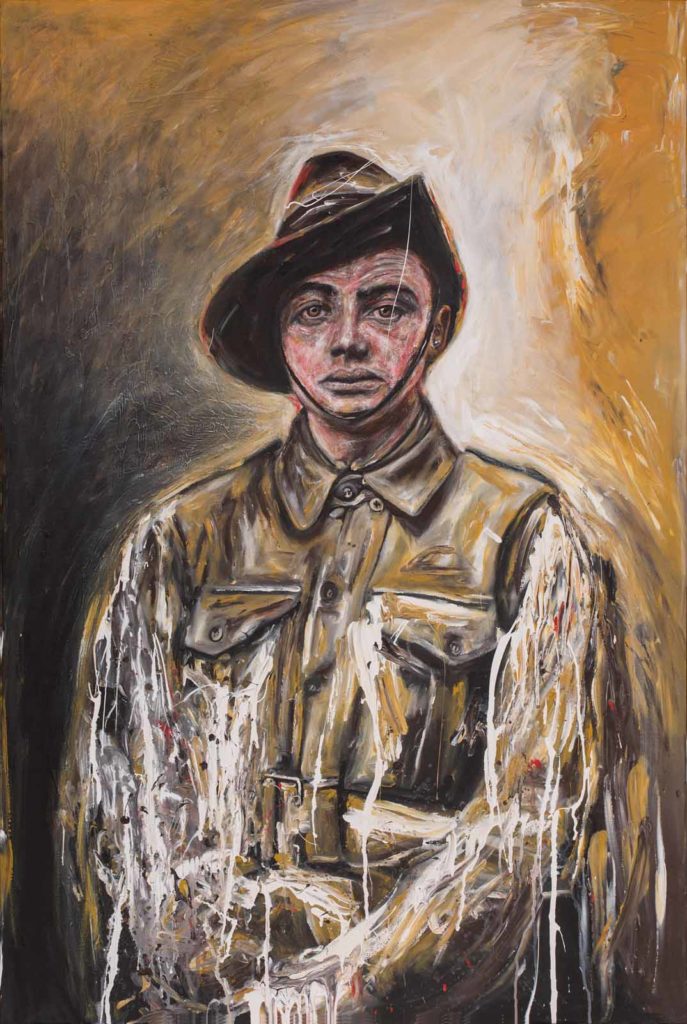George Gordon Gilbert
THE SAD YOUNG DIGGER OF POZIERES
The look on the face of this young man saw him dubbed the ‘Sad Young Digger’. He appears three times in the collection twice in the group photographs and once in a single portrait. While some soldiers are smiling or clowning around in portraits, in each of his images, he has the same anguished expression. What horrors might he have seen to make him so achingly sad? It became a priority to put a name to his distinctive face. What emerged was that the sad young digger had indeed been a part of one of the bloodiest battles in Australian history; and he had good reason to be sad.
In the dreadful fighting that was to come in Pozieres, the Australians suffered more than 23,000 casualties in just six weeks – including an estimated 7,000 killed or missing – in an area no more that a square kilometre.
War historian Charles Bean wrote that the Windmill site at Pozieres ‘marks a ridge more densely sown with Australian sacrifice, than any other place on Earth’.
The identification of the sad digger was solved by a letter written by a fellow soldier Horace Parton where he points out George Gilbert in referencing a group photograph.
George Gilbert had blue eyes, brown hair, and was five feet seven inches tall (170 centimetres). He weighed just nine stone (fifty-seven kilograms). An additional description says he had a small scar on his cheek and a careful look at the individual Thuillier portrait shows this small scar just above his right lip.
George Gordon Gilbert was most likely a lot younger that his service records suggest. His enlistment papers point to him being nineteen years old when he enlists in May 1915. It seems more likely that he put up his age when he enlisted and was most likely only seventeen at the time. He was barely eighteen years old when the Thuillier pictures were taken.
Gilbert was from Birmingham in England and had come to Australia when he was sixteen, only to find himself off to war in Europe within a year. His family remained in England; a note on his service record indicates he provided no contact details in Australia. The only address is that of his father, William Martin Gilbert of Kenelm Road, Small Heath, Birmingham. There are few other details on the file except for the from red script, ‘Killed in Action’.
Young George Gilbert died in the front line action at St. Martin’s Wood near Amiens. Horace Parton describes it in a letter to his sister Vera: ‘The night before the stunt we were in support trenches. Everybody was asleep and Fritz was putting a few over and at last he got one right in our section’. Gilbert was killed by the shell and is buried in the Cerisy-Gailly French War Cementery not far from the town of Corbie. At least now the sad young digger – possibly – has the dignity of a name.


